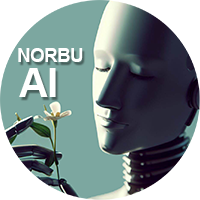The holy mountain of Japan
By DONALD RICHIE, The Japan Times, Oct 5, 2008
Tokyo, Japan -- Koyasan is the general name for the Buddhist monastic complex (Shingon sect) residing atop Mount Koya in Wakayama Prefecture.
 Sometimes regarded as one of the most sacred places in Japan and often called Japan's Lhasa, Koyasan was known as a holy mountain for ascetics even before imperial permission to build a religious community was requested in 816.
Sometimes regarded as one of the most sacred places in Japan and often called Japan's Lhasa, Koyasan was known as a holy mountain for ascetics even before imperial permission to build a religious community was requested in 816.
The petitioner for the community was the Buddhist priest Kukai, also known as Kobo Daishi (774-835), propagator of the Shingon sect of Buddhism.
Having studied in China, back home he introduced esoteric Buddhism, a belief that has been described as emphasizing yogic discipline leading to direct spiritual experience, characterized by a rich symbolism and a highly complex iconography.
Among the many whom the splendors and rigors of Koyasan have attracted over the centuries was Philip Nicoloff, now professor emeritus of English at the University of New Hampshire. From early on, he began visiting the place and gradually his interest became a passion. I have been told that writing this book took him 40 years and the scholarship is such that I am ready to believe it.
He himself calls his book "A Pilgrimage to the Mountain Temple of Saint Kobo Daishi" and thus indicates its emphasis. In this sumptuous evocation of the place, Nicoloff follows the pilgrims' route from Namba Station to the inner recesses of the Gobyo, the mausoleum where sits Kukai himself, not dead but entered into a deeply concentrated meditation, awaiting the appearance of the next Buddha Maitreya.
The author knows (and thinks to include) that there are four cars on the Koyasan Express from Osaka; that outside the window, "somewhere in that purple haze, is the burial cave of the goddess Izanami, co-creator with her brother of the islands of Japan"; that the cable car, next stage in the journey, is the steepest in Japan; and that Kukai barred his own mother from entering the complex.
This was during the days when women were commonly denied entry and such exclusion was not rectified at Koyasan until 1906. Kukai would no doubt have been scandalized. As it is, the author is told by a resident priest that an essential element of priestly discipline was thus lost. "Now our priests worry about their automobiles. Some take up golf."
From one interesting detail to the next, Nicoloff describes the various temples, looking at all the treasures each contains, and then proceeds to the supreme treasure of the place, the Okunoin, Koyasan's famous forest cemetery ("two kilometers in length and containing more than two hundred thousand tree-shaded memorials.")
Here is the memorial to Toyotomi Hideyoshi which reads "the greatest man in the history of Japan." Here we are taught how to read the stupa-like gorinto monuments: "The square base stone signified Earth, the globular stone for Water, next is the flared triangular stone, Fire, then a hemispherical stone, Wind, and finally a jewel-shaped stone, Space."
We are also told about the systems of the "Five Precepts," "Five Wisdoms," the five basic colors and the five methods of cooking: raw, boiled, baked, fried and steamed, and the five basic tastes: sour, salty, sweet, tangy, and fermented.)
At the same time we are offered some sound advice. The author decides to have a part of his eventual ashes left at Koyasan and then adds: "The processes of the universe involve mingling and rendering everything that dies. So get used to it."
I do not know any other book that is quite like Nicoloff's. It can be used as a guide but it is much more than that. It can be used as a Buddhist breviary but it is much more than that too. It is, I think, something like a mandala — a design, a chronicle, that describes a place and at the same time symbolizes a process: Buddhist faith.
At any rate, it is captivating reading and you will certainly take your copy with you on the eventual pilgrimage to Koyasan that this book will impel you to make.
-------------------------------
SACRED KOYASAN by Philip L. Nicoloff. Albany: State University of New York Press, 2008, 392 pp., 20 b/w photos, $29.95 (paper)

 Sometimes regarded as one of the most sacred places in Japan and often called Japan's Lhasa, Koyasan was known as a holy mountain for ascetics even before imperial permission to build a religious community was requested in 816.
Sometimes regarded as one of the most sacred places in Japan and often called Japan's Lhasa, Koyasan was known as a holy mountain for ascetics even before imperial permission to build a religious community was requested in 816.